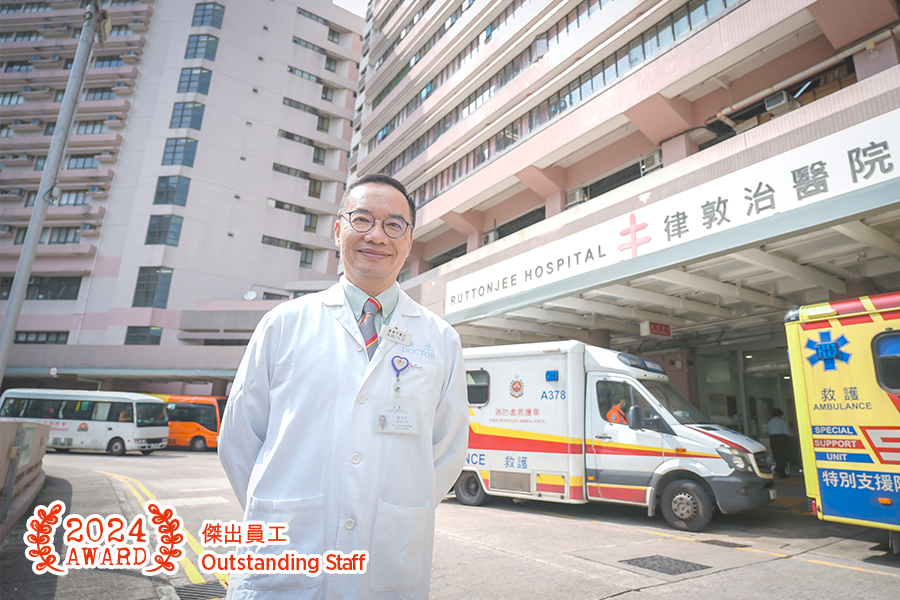Responding to emergencies wherever they strike
 Dr Axel Siu Yuet-chung
Dr Axel Siu Yuet-chung
Chief of Service (Accident & Emergency), Ruttonjee and Tang Shiu Kin Hospitals
“Helping people shouldn’t be restricted to Accident & Emergency (A&E) Departments,” explains Dr Axel Siu Yuet-chung. “Sometimes, you have to take the A&E Department outside the hospital.” Dr Siu, who has been working in A&E for more than 30 years, is also a long-time member of the Hospital Authority Emergency Response Operations Outside the Hong Kong SAR Support Team, helping Hong Kong people in trouble wherever they may be. In early 2020, for instance, he boarded a chartered flight to Wuhan to bring back 1,027 Hong Kong people stranded in the city when COVID-19 broke out.
“It was a big challenge as the passengers included pregnant women, elderly people, children, and chronic patients, and we didn’t know how many of them were carrying the virus,” Dr Siu recalls. “All the team could do was prepare the medical supplies as quickly as possible and stay calm in emergencies that might occur.” After arriving in Hong Kong, only one person was tested positive to COVID-19, reflecting the effectiveness of infection control measures during the operation. Another unforgettable experience was during the 2003 SARS outbreak, Dr Siu and his colleagues resuscitated a patient suffering from pneumothorax by intubation and clearing the patient’s airway. “The knowledge and resources back then were not as good as they are today,” he says. “We used personal protective equipment, but we were still apprehensive. Was I afraid of getting infected? Of course, we need to consider personal risk, but it is impossible to have zero risk in the workplace and there are some risks I feel I have to take.”
Looking ahead, Dr Siu expects new technologies such as Virtual Reality (VR) to improve healthcare workers training. “In A&E, there is no time to hesitate as a patient can suffer a respiratory arrest and cardiac arrest in a matter of minutes. So, the more realistic the training scenario, the better we can train our colleagues to deal with real-life situations,” he says. Dr Siu sees every A&E patient as a learning opportunity. “They teach us to act like detectives – to identify the symptoms of a disease quickly and carefully, and to understand the needs of patients through communication. If cases including child abuse and sexual violence are identified and timely referred during an A&E consultation, we are playing our part in the frontline and protecting the public.”